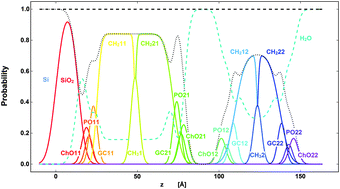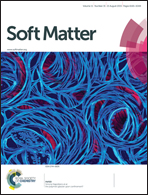The component group structure of DPPC bilayers obtained by specular neutron reflectometry†
Abstract
Specular neutron reflectometry was measured on a floating bilayer system consisting of 1,2-dipalmitoyl-d62-sn-glycero-3-phosphocholine deposited over a 1,2-dibehenoyl-sn-glycero-3-phosphocholine bilayer at 25 and 55 °C. The internal structure of lipid bilayers was described by a one-dimensional neutron scattering length density profile model, originally developed for the evaluation of small-angle scattering data. The reflectivity data from the supported bilayer were evaluated separately and used further as constraints in modeling the floating bilayer reflectivity curves. The model reflectivity curves successfully describe the experimental reflectivities of the supported bilayer in the gel phase and the floating bilayer system in the liquid-crystalline phase. The results yield an internal structure of a deposited bilayer and a floating bilayer on the level of component groups of lipid molecules. The obtained structure of the floating d62-diC16:0PC bilayer displays high resemblance of the bilayer structure in the form of unilamellar vesicles. At the same time, however, the results show differences in comparison to unilamellar vesicle bilayers, most likely due to the undulations of supported bilayers.



 Please wait while we load your content...
Please wait while we load your content...